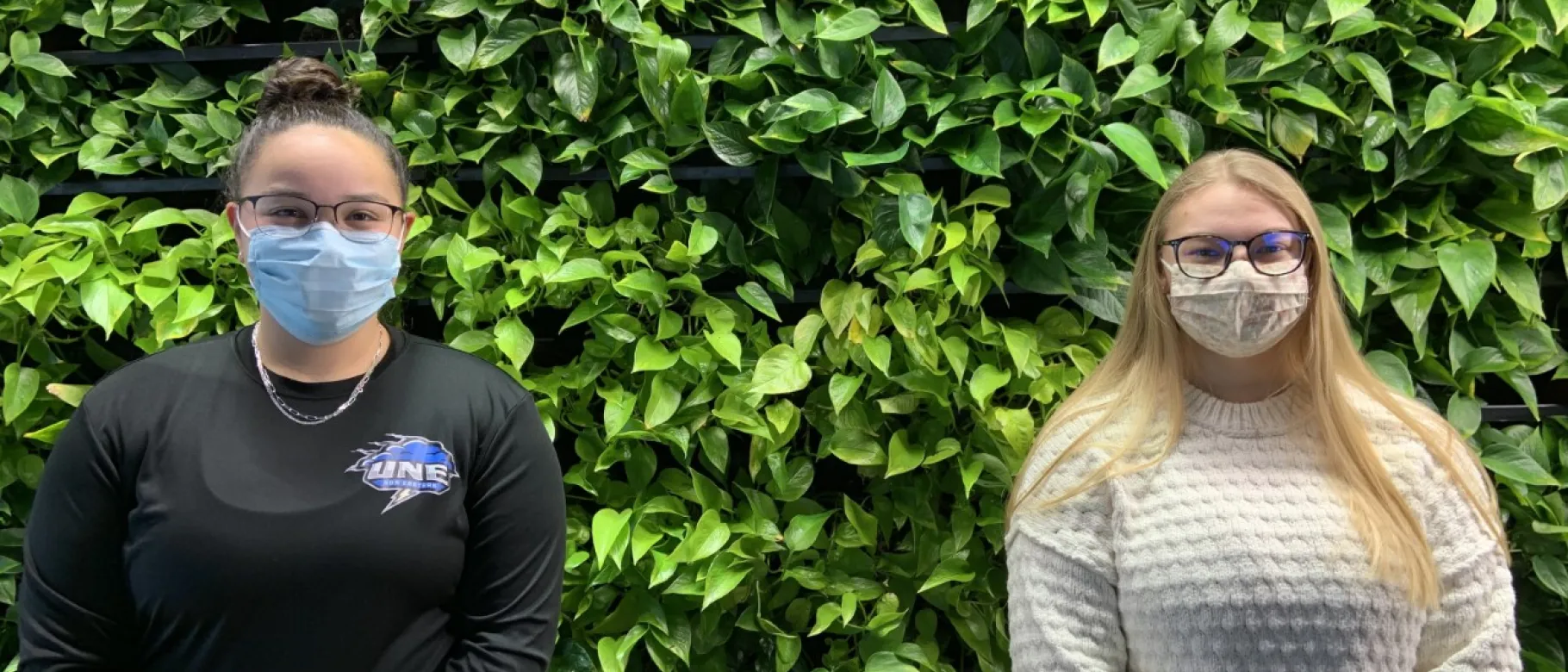Students’ GIS work to highlight state’s minority-owned businesses on ‘Greenlight Maine’ spinoff

Two University of New England students will use their knowledge of geographic information systems (GIS) to highlight Maine’s minority-owned businesses in an upcoming television series.
Marine biology Class of 2023 students Salma Bezzat and Lydea Rowell have partnered with the series “Elevating Voices,” which aims to support various ethnic backgrounds across the state and the contributions they make to Maine’s economy. Part of the “Greenlight Maine” franchise, the non-competitive series will feature 12 minority-owned businesses over the course of six episodes in March and April.
For the show, the two students will use GIS — a framework for gathering, managing, and analyzing data rooted in the geographical sciences — to map out the 12 featured businesses and, using ArcGIS’ StoryMaps platform, make an interactive map that will help tell the participants’ stories.
“It can be difficult to find minority-owned-businesses, and so mapping out these businesses can be a very valuable tool to the community,” said Rowell, of Manchester, New Hampshire. “We hope that our map can serve as a more accessible and easy-to-interpret resource for others.”
The endeavor is one with which the Bezzat and Rowell are familiar.
In late 2020, as part of a final project completed for the pair’s Fundamentals of Geospatial Science and Technology course, Bezzat and Rowell created an interactive map of minority-owned businesses in Biddeford — home to UNE’s seaside residential campus — both to acknowledge such business’ presence and to encourage the UNE and local communities to support them.
Using the same StoryMaps software, the students mapped out 19 minority-owned businesses in Biddeford — a mix of restaurants, bars, music stores, clothing retailers, and salons — and included links to their websites, social media, and contact information. To be considered minority-owned, the businesses must be at least 51% owned and operated by one citizen or more with an ethnic background of 25% or more (i.e. Asian-Indian, Asian-Pacific, Black, Hispanic, or Native American).
Although the map was created as part of a class project, it held deeper meaning for the two students, who recognized that there was no such database for businesses in the Biddeford area.
“Lydea and I realized how difficult it was to research and locate different minority-owned businesses near us. Even though there were businesses out there owned by minority groups, there was no resource for them online,” said Bezzat, of diverse Malden, Massachusetts. “Especially during the COVID-19 pandemic, where many small businesses are having to close up shop, we wanted to showcase these businesses and encourage our UNE community to explore them.”
The project came about as the nation saw a reckoning over racial and social injustice and as institutions across the United States — including UNE — began to more comprehensively incorporate diversity, equity, and inclusion (DEI) principles into their curricula.
Marcia Moreno-Báez, Ph.D., visiting assistant teaching professor in the School of Marine and Environmental Programs, said that GIS is not just about making maps and solving complex spatial problems. Rather, she said, GIS can empower students to incorporate DEI values into their work.
"GIS students have used their platforms to make minority groups more visible as they create spaces that allow all of us to see things in ways we might not have before,” Moreno-Báez remarked. “With GIS becoming more powerful and accessible, it is important to know how we can leverage its capabilities in unique ways to create a more equitable world."